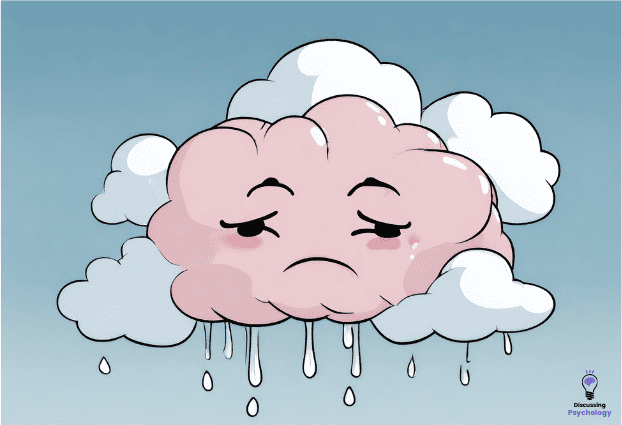Maladaptive daydreaming and borderline personality disorder share a number of symptoms, traits and underlying causal conditions.
It’s for this reason that Eli Somer, the Israeli psychologist who coined the term maladaptive daydreaming and who continues to be actively involved in its research, believes there could be a connection between the two conditions.
Keep in mind maladaptive daydreaming is a relatively new concept. So, there’s not a great deal of research exploring this relationship—but that doesn’t stop us from speculating.
As it currently stands, maladaptive daydreaming (MD) and borderline personality disorder (BPD) can be said to have three main areas of overlap:
- Childhood trauma
- Emotional dysregulation
- Dissociation
Let’s take a closer look at each point below.
Childhood Trauma
Adverse or traumatic experiences in childhood, such as abuse, neglect, or abandonment, are one of the main risk factors for the development of BPD.
These early experiences (in combination with genetic and biological vulnerabilities) have a profound impact on how the person views themselves, other people, and the wider world, leading to intense difficulties with emotional regulation and an unstable sense of identity.
Maladaptive daydreaming has likewise been shown to arise as a result of childhood trauma.
When forced to endure painful circumstances for prolonged periods, children may resort to fantasies as a means of coping, creating imaginary friends or alternate worlds as an escape from the harsh reality they are trapped in.
“Since most individuals with MD report trauma history, one can predict that MD will be more prevalent among people with BPD.”
– Eli Somer, Therapytips.org
This tendency to use daydreams as an escape from difficulties in reality then persists into adulthood.
Interestingly, MD is only thought to occur as a response to trauma in children who have an innate capacity for immersive daydreaming.
Somer and colleagues consider immersive daydreaming to be a personality trait that some people have and others do not.
This ability to create rich fantastical experiences can produce a great deal of pleasure under the right circumstances, but in people with BPD or MD, it serves as an unhealthy coping mechanism and ultimately becomes addictive.
Emotional Regulation
Another possible link between maladaptive daydreaming and BPD is that both involve difficulties regulating emotion.
Extremes of emotion and difficulty calming down are core characteristics of BPD. In people with MD, higher levels of daydreaming have been shown to predict greater difficulties in emotional regulation.

While the exact role emotional regulation difficulties play in linking borderline personality disorder and maladaptive daydreaming is not yet known, the fact that MD causes these difficulties is significant.
Given that MD often arises as a coping strategy in response to trauma or unmet needs and is considered an unhelpful coping strategy leading to increased distress, it could be a risk factor for the development of additional conditions.
A development pathway consisting of trauma leading to use of MD as a coping strategy, leading to increased distress and the development of further mental health conditions (including BPD), could be one way in which these conditions are linked.
Dissociation
Finally, both Borderline Personality Disorder and maladaptive daydreaming involve a dissociative element.
Dissociation, or the separation of your conscious awareness from the environment around you, is the core experience involved in MD.
Dissociation also occurs in around 75% to 80% of people with BPD, often as a response to stress.
In extreme cases, dissociation is linked to a class of conditions called dissociative disorders: rare conditions characterized by a severe breakdown in the patient’s connection with reality.
Dissociative disorders are relatively rare in people with MD, representing only 12.8% of participants in one comorbidity study—compared to 71.8% who had some form of anxiety disorder and over three quarters who had ADHD.

Interestingly, amongst the subset of people living with dissociative disorders, MD was found to be much more common.
In one study of patients with dissociative disorders, 72% were found to engage with maladaptive daydreaming to some extent.
Not everyone who daydreams experiences severe dissociation, but a significant number of those who have dissociative disorders daydream excessively.
This study also reported that 72% of participants were diagnosed with Borderline Personality Disorder, highlighting the link between extreme dissociation and other mental conditions.
Virtually all (93%) had experienced some form of physical or sexual abuse.
This research again points to certain individual traits and experiences which predispose one to unhealthy levels of dissociation and therefore to both MD and disorders involving dissociation including BPD.
Traits Predisposing to Dissociation
- Capacity for absorption, or the ability to become fully engrossed in a task or experience to the point that the rest of your sensory experience is diminished.
- Visualization ability, or the ability to create vivid internal images and scenes.
- Addiction, or tendency towards addictive behaviors.
- Avoidance, or unhealthy dissociation often serves a function of avoiding facing difficult experiences or memories.
Taken together, these criteria mean that individuals with a high capacity for creating and becoming absorbed in their own imaginations, who have experienced trauma or adversity that they feel the need to avoid, and who are at risk of developing addictions, are at the highest risk of developing unhealthy levels of dissociation.
Treatment Methods
Treatment for BPD typically involves a combination of medication and psychotherapy to help patients deal with strong emotions, process childhood trauma, and increase their capacity to engage with their own thought processes.
While there is currently no standardized form of treatment for maladaptive daydreaming, researchers recommend the following principles:
- Treating the compulsive nature of daydreaming using an addictions treatment framework.
- Mindfulness meditation practice to increase capacity to remain focussed on the present.
- Improving social skills since MD often occurs in isolation and as a response to loneliness.
- Some form of talking therapy to address the unmet needs or traumatic experiences underpinning the condition.
While some of these treatment principles, particularly mindfulness and trauma processing, are compatible with both treatment for MD and for BPD, developing treatments specifically targeting MD is an important goal of future research.
Going Deeper
Both maladaptive daydreaming and BPD are complex disorders with a variety of possible causes and risk factors. Both produce intense distress and impairment in those afflicted.
While research into the connection between these two conditions is just beginning, common components such as past trauma, capacity for dissociation, and traumatic experiences could underpin both.
Delving deeper into these shared factors could lead to a better understanding of how to treat both conditions.
- Ross, C., Ridgway, J., & George, N. (2020). Maladaptive daydreaming, dissociation, and the dissociative disorders. Psychiatric Research and Clinical Practice, 2(2), 53–61. https://doi.org/10.1176/appi.prcp.20190050
- Salters-Pedneault, K. (2020, February 10). Borderline Personality Disorder treatment. Verywell Mind. https://www.verywellmind.com/borderline-personality-disorder-treatment-425451#toc-psychotherapy
- Salters-Pedneault, K. (2020, June 8). What is dissociation in Borderline Personality Disorder (BPD)? Verywell Mind. https://www.verywellmind.com/dissociation-in-borderline-personality-disorder-425482
- Salters-Pedneault, K. (2021, November 5). What is Borderline Personality Disorder (BPD)? Verywell Mind. https://www.verywellmind.com/what-is-borderline-personality-disorder-bpd-425487
- Somer, E., Abu-Rayya, H., & Brenner, R. (2020). Childhood trauma and maladaptive daydreaming: Fantasy functions and themes in a multi-country sample. Journal of Trauma and Dissociation, 22(3), 288–303. https://doi.org/10.1080/15299732.2020.1809599
- Somer, E., Soffer-Dudek, N., & Ross, C. (2017). The comorbidity of Daydreaming Disorder (maladaptive daydreaming). Journal of nervous and Mental Disease, 205(7), 525–530. https://doi.org/10.1097/nmd.0000000000000685
- Travers, M. (2021, September 7). What is maladaptive daydreaming? Therapytips. https://therapytips.org/interviews/what-is-maladaptive-daydreaming
- West, M., & Somer, E. (2019). Empathy, emotion regulation, and creativity in immersive and maladaptive daydreaming. Imagination, Cognition and Personality, 39(4), 358–373. https://doi.org/10.1177/0276236619864277

